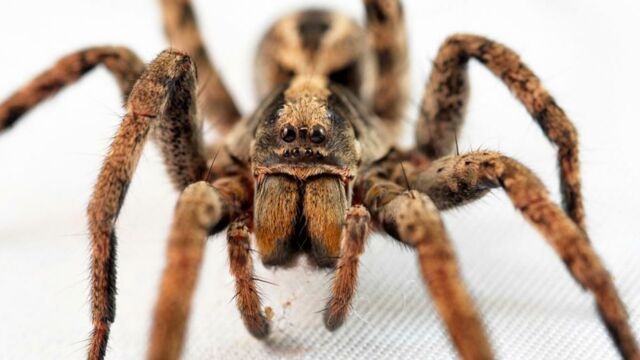Wolf Spiders Could Have An Unexpected Influence On Global Warming

Researchers have revealed the unexpected effects of climate change on an unknown species: the Arctic wolf spider.
As the northernmost region of the globe, the Arctic is inseparable from its extensive ice pack and surrounding tundra. On this ice territory, lives a fauna as well-known as the harsh local climate. Bears, foxes and polar hares are indeed an integral part of this pristine landscape. But in this white immensity are also hidden much more discreet beings, much smaller too, and yet very present: Arctic wolf spiders.
Discover our latest podcast
Native to the Arctic, Pardosa glacialis enjoy (as their scientific name suggests) polar frost. As discreet and unknown as it is, this species is overabundant in the tundra and has about eighty times the population of the grey wolf. This abundance has prompted researchers to study this little arachnid in more detail.
More under this adMore under this adIt must be said that the Arctic wolf spider plays an essential role in its ecosystem. Its favourite prey are small arthropods known as collembola. Before being eaten, these pancrustaceans feed on fungi, which also need to eat. A need that they fill by degrading dead plants...
A double-edged mechanism
This process is beneficial for the local flora, which benefits from the nutrients released by this degradation mechanism. But, more surprisingly, it is also particularly harmful to the climate, causing carbon dioxide and methane to be released into the atmosphere. It is, therefore, this complex chain reaction that researchers have examined in a study published in the Proceedings of the National Academy of Sciences journal. Their goal? To determine the effects of climate change on the actors in this cycle, and first and foremost on the wolf spider.
More under this adMore under this ad'The way organisms interact with each other can influence important ecosystem functions, such as the amount of carbon that is held by plants, the rate at which decomposition occurs, and how nutrients circulate within the ecosystem,' says lead author Amanda Koltz, a biologist at the University of Washington in St. Louis, USA.
A disrupted logic
Logically, the larger the number of wolf spiders, the more the population of their favourite prey - the collembola - tends to decline. This logic is only valid under current climatic conditions. According to the researchers' analyses, a temperature increase would indeed upset this cause-and-effect relationship, which seems to be so solid.
More under this adMore under this adWith an additional one to two degrees Celsius, the ratio eventually surprisingly fades: despite the presence of a large number of spiders, springtails proliferate. This is due to the change in the diet of the Arctic wolf spider, which then turns to other prey. As a result of this unexpected increase in the number of springtails, a larger quantity of fungi are consumed.
As a greenhouse gas emitter, the decomposition phenomenon that they cause is then reduced. 'This suggests that under certain conditions, [spiders] could reduce some of the effects of warming caused by tundra carbon loss,' explained Amanda Koltz. 'It's a good thing,' said the biologist.
More under this adMore under this adAn enthusiasm to be put into perspective
This discovery thus disrupts scientific knowledge about some of the effects of climate change, as Amanda Koltz pointed out: 'We often think about how higher temperatures could strengthen or weaken the interactions between predators and their prey. But in this case, we show that when global warming changes these interactions, it can also lead to changes in ecosystem-level processes such as decomposition rates.'
As surprising and pleasing as it is, this discovery highlights a phenomenon whose importance remains relatively limited. 'Spiders will not save us from climate change,' Amanda Koltz finally tempered.
More under this ad